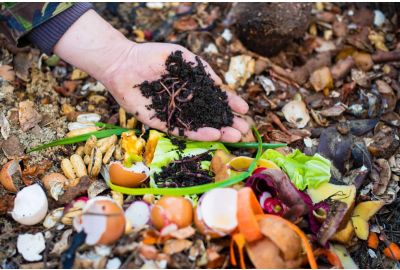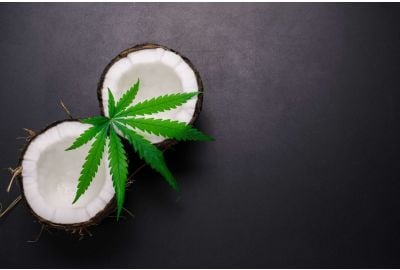How To Recognize & Fix Overwatered And Underwatered Weed Plants
During cultivation, it's easy to end up with an over or underwatered weed plant. Providing crops with moisture seems simple until you meet several enthusiasts facing the same issue.
Imagine how heartbreaking designing a killer grow setup is to find your cannabis clinging on for life. Ready to learn some tips to prevent this from happening?
We present the ultimate guide to explain why overwatering cannabis is just as harmful as underwatering. Discover a few symptoms to help you differentiate between them. We provide relevant solutions and tips to ensure you don’t face this challenge again.
Overwatered cannabis: signs and how to fix
As a first-time cultivator, you may believe more water promotes faster growth. This isn’t the case. Overwatering cannabis happens when there's too much H2O for your plants.
You might not be directly providing too much moisture. Other reasons leading to the issue include:
- Excessive provision of nutrients
- A poor-draining medium
- Too small a pot
- A cold growing area
- Feeding at lights out
Overwatered weed plants invite bacteria and diseases that thrive in damp and low-oxygen conditions. Resolving the problem saves you from more significant future troubles.
Signs of overwatering cannabis
If you’re an observant weed parent, identifying an overwatered marijuana plant is easy. Drowning cannabis displays symptoms such as:
- Curling leaves
- Drooping leaves and stems
- A general exhausted and unhealthy look
- Firm and sturdy leaves since they're full of water
- Increased drooping after immediate watering
- Slow or stunted growth when the situation persists
- Yellowing leaves
How to fix and avoid overwatering weed
There's no need to panic after noticing any sign. Fixing the issues is as easy as identifying them.
Don't water for about 2–3 days to allow your medium some drying time. The arid environment provides air spaces through which roots receive fresh oxygen.
How long does it take for an overwatered plant to recover? Depending on the situation's complexity, it should restore in 1–2 weeks.
To avoid it altogether, do the following:
- Use the best soil for marijuana right from the start to ensure proper drainage. A high-quality organic soil mix should do it.
- Overwatered cannabis lacks oxygen. Add rough materials like pebbles to improve air circulation and drainage.
- Grow your seeds in a smaller pot and increase size as they mature.
- Avoid watering weed when it's cold—plants use up less in low temperatures, so they retain more.
- Drill several holes underneath your container. Drain 20% of its moisture and prevent overwatering marijuana plants.
- Use smart or air pots to help oxygenate the sides of the growing medium.
- Only provide water after performing a finger test. Stick a finger up to your first knuckle and ensure it's dry.
- Decrease H2O quantities while increasing gaps between sessions.
Underwatered weed plants: how to identify and correct
It seems unlikely that anyone would be underwatering weed plants, right? Sometimes, keeping up with a regular irrigation schedule isn't simple.
Insufficient H2O dries the growing medium and prevents herbs from carrying out transpiration and other processes. If left unchecked, nutrient deficiencies begin and affect development.
Lack of moisture also makes any environment a breeding ground for marijuana pests.
Apart from the occasional neglect, there are other reasons for underwatered cannabis plants.
- A medium with poor-holding capacity fails to hold water long enough for plants to absorb.
- An environment with a high temperature evaporates any moisture available.
- A watering cycle spread too far apart leaves the medium too dry between sessions.
- A perfect schedule but inadequate water supply leaves them thirsty.
Signs of underwatering cannabis
Detecting signs as they pop up is your best defense against further complications. So, what do underwatered weed plants look like?
- The leaves droop and curl.
- They feel paper-thin and crispy when touched, especially at the tips.
- Droopiness reduces after instant watering.
- Appearance becomes burnt and brown or yellow due to severe thirst.
- The entire herb seems sickly and worn out.
- Growth slows or stops altogether.
How to fix and avoid underwatering marijuana
It isn't hard to cure underwatered cannabis. Add moisture until it starts dripping through the holes beneath its pot. The H2O you use should be nutrient-free and pH-balanced.
Repeat that process after you confirm the soil is dry. Within five days, the symptoms start fading away.
Don't wait until you observe signs of underwatering cannabis to take action. Here are ways to prevent it:
- Add clay to your indoor cannabis seeds if their medium doesn't retain any liquid. You can also swap with organic, store-bought soil mix.
- Develop a schedule that keeps your herbs hydrated even when you're away.
- Low temperatures slow activity. When watering cannabis plants indoors, control their surrounding heat level to encourage uptake.
- Lifting the pot before and after hydrating crops gives you a reference point of how light it should feel whenever it's parched.
- Buy a soil moisture sensor for more accuracy about wetness levels.
- Check on your marijuana between 1–3 days to ensure they don't remain dry for extended periods.
- Increase water amounts, and decrease the space between sessions.
Overwatering vs. underwatering: what are the differences?
Overwatered weed plants are more common than dehydrated ones, but that doesn't make them any less stressful.
Identifying a culprit at first glance may be challenging since the two have similar clues. Here are a few significant differences to keep in mind:
| Overwatering Cannabis | Underwatering Cannabis | |
| Leaf Texture: | Firm and sturdy | Paper-thin and crispy |
| Leaf Discoloration: | Yellow | Brownish-yellow |
| Drooping: | Increases after watering | Decreases after watering |
| Finger Test: | Growing medium feels moist | Growing medium feels parched |
| Lifting the pot: | Heavy | Light |
Bonus tips for watering weed
Various factors influence how your marijuana absorbs liquid. We've listed a few tips to help maximize your success and prevent under or overwatering cannabis:
Efficiency is better than frequency
You might think hydrating your plants often helps them get enough moisture, but it does more harm than good. You risk overwatering them in the process.
Let them soak for some time to promote healthy root development. Fill 30% of the pot’s capacity and allow the roots to absorb what they need without interference.
Stay vigilant
Perform regular inspections, and note any physical changes. Neglecting them may lead to missing out on signs of trouble. Scrutinize the marijuana and its surroundings, and ensure the grow room is clean.
Timing is key
When coming up with an irrigation schedule, analyze your environment, not when it’s either hottest or coldest.
Add moisture when temperatures are highest to help your plants restore any loss through transpiration and excessive evaporation. It prevents them from dehydrating and making you believe you’re underwatering your cannabis.
The pH range matters
The best water for weed plants is slightly acidic at a pH of 5.5–7. That’s 6–7 when using soil and 5.5–6.5 in hydroponics. When the range is off, the roots struggle to absorb minerals and nutrients.
Sources vary, so buy pH testers to ensure your H2O is within the required spectrum. Do the same whenever you mix nutrients.
Start from its center to the edge
If you already have an underwatered weed seedling, hydrate it from the center of the pot. Doing this helps its roots soak up the liquid and any available nutes first, giving ample time for recovery.
Do the same under normal circumstances for optimum moisture absorption.
Invest in pumps fitted with lines and plug timers
Irrigating your weed may feel like a lot of work when you're exhausted. Pumps with plug timers reduce this hassle since they automatically function at 12 or 24-hour intervals.
They also help you maintain a routine even when you're away for a few days. Be sure to set the correct parameters before leaving.
Frequently asked questions about over and underwatering cannabis
Under and overwatered weed plants can cause a lot of trouble. Once you master the facts above, dealing with the issue becomes more manageable. Check out these frequently asked questions which emphasize essential details.
What happens if you overwater cannabis?
You damage your marijuana's roots when you supply more H2O than it needs.
Roots store oxygen in air pockets within them. When you overwater cannabis, moisture damages them, and air escapes. They also become susceptible to root rot and other complications that lead to the plants' eventual death.
What should you do if you overwater cannabis plants?
Stop your schedule immediately if you realize you've provided your pot with excessive aqua.
Wait for the growing medium to dry in 2–3 days, then reintroduce a less frequent routine with reduced quantities. Once the signs of overwatering cannabis disappear, incorporate different tips to avoid recurring complications.
Can weed plants recover from underwatering?
Marijuana recovers from dehydration as long as you spot it early.
Replenish it with pure H2O and repeat the process whenever the soil dries. Don't forget to put preventive measures in place when your herbs recover.
Happy watering
Now you know how to recognize over and underwatered weed plants. Such knowledge is crucial to your cultivation journey. It can save your marijuana's life.
Remember, keep an open eye and correct any issues swiftly to avoid irreversible damage. It's all fixable, but avoid the hassle in the first place using our tips.
Test your newfound knowledge on weed seeds from Homegrown Cannabis Co. Become part of our Homegrown Forum community to exchange growing experiences with eager enthusiasts like yourself.
About the author: Derek LaRose
Also known as Kronic from The Cannabis Kronicles, Derek LaRose is a young ambitious cultivator and a staple educator for indoor cultivation.


